Flying Kiwi is as uniquely different as bus tours come and it’s just what you want for New Zealand
New Zealand is known for a lot of things but what I love the most about it are the pristine outdoors, the larger-than-life sweeping landscapes, their utter addiction to adventure, and how dynamic the travel experience is as you go from the South to the North or vice versa. It’s almost as if the country is geared to make sure you cross off items on your bucket list.
The one way we were able to achieve epic moment after moment in New Zealand was with an adventure bus tour company called Flying Kiwi. Hopping on from Queenstown, we embarked on an adventure of a lifetime. We didn’t know what to expect going into it as you know we typically favour independent travel but we were blown away by what we’ve been missing out all these years. Read more to find out my full review of our Reverse Traverse itinerary.
New Zealand is a packed with adventure – you really need to see it all
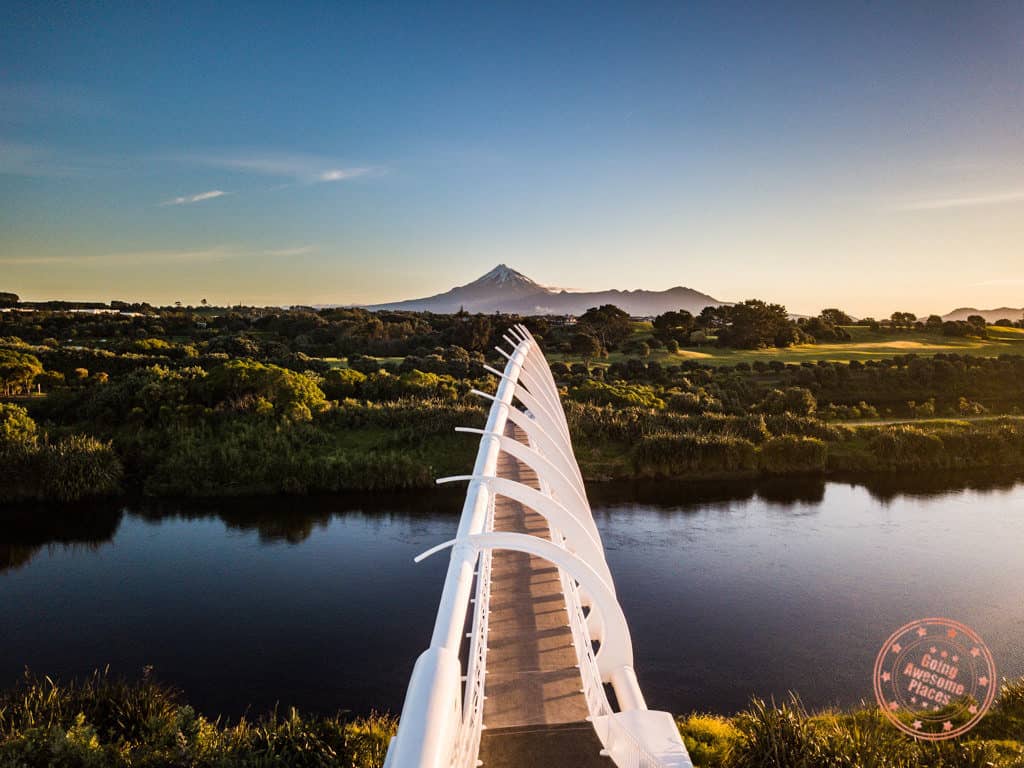
2024 Update
I don’t believe there was an official announcement on their website but we just learned that Flying Kiwi was acquired by Stray and will be operating independently under the same brand so you could say it’s business as usual!
Save 10% off for tours departing March or April 2024.
Okay first you need to know something about New Zealand. As small as it is geographically it is also massive at the same time. That’s why you can’t just pop into the country and expect to see it all in a week. You really need to dedicate at least 2 or more weeks to see a big chunk of it.
As I started doing research for my latest trip to New Zealand, I was quickly overwhelmed. The funny thing is, I’ve been to New Zealand before too. Since the idea of doing this trip was really last minute, I literally had 3 weeks to plan this trip with my wife. Knowing there was no way I could figure it all out, I looked to see what other options were out there.
What I was looking for was a tour that we could jump in on that would be focused on experiences, had flexibility, and would allow us to see a big part of somewhere I hadn’t seen of New Zealand – the western coast. That’s when I learned about Flying Kiwi and led to us signing up for the 14 day Reverse Traverse trip that would see us go from Queenstown all the way up to the Bay of Islands.
Alright enough jibber jabber, let me jump into what you’re probably most interested in – how was Flying Kiwi as an adventure bus tour and should you book with them?
Read more about New Zealand
- How To Visit The Hobbitown in New Zealand
- Skydive New Zealand
- The Comprehensive New Zealand Travel Guide
- The Ultimate 3 Week New Zealand Itinerary
How to get the best deals in travel
- Hottest deals – Bookmark the travel deals page.
- Car rentals – stop getting ripped off and learn about car rental coupon codes.
- Hotels – Use corporate codes or get Genius 2 tier with Booking.
- Flights – Have you ever heard of the “Everywhere” feature?
- Insurance – Make sure you’re covered and learn more about where to buy the best travel insurance.
In This Article
The Reverse Traverse
Falling under Flying Kiwi’s “Full New Zealand Tours”, this is one half of the Ultimate Explorer which does the full loop of the country. Since we couldn’t make the full 28 days fit on our schedule, we did the next best thing which is the Reverse Traverse.
A heads up that the Reverse Traverse is currently not offered by Flying Kiwi due to the pandemic but there is the Grand Traverse which does the other half of the Ultimate Explorer.
This picks up from Queenstown in the South Island and meticulously follows the western coast for 14 days. We joined this tour near the beginning of our full 3 week trip to New Zealand.
Itinerary map
Highlights
We did so many incredible things on our Flying Kiwi bus tour and while these activities are specific to the Reverse Traverse, the availability of excursions will really vary based on the itinerary you choose.
If I had to rank the best experiences, it would:
- Skydiving Abel Tasman
- Black Water Rafting
- Pancake Rocks in Punakaiki
- Bay of Islands
- Sand Boarding
A day in a life
Over the course of our 14 days, I wanted to capture what it’s really like to be on a Flying Kiwi adventure bus tour. The video player provides a full look at what you can expect from waking up in the morning to calling it a night in the evening.
Why Flying Kiwi over doing it yourself?
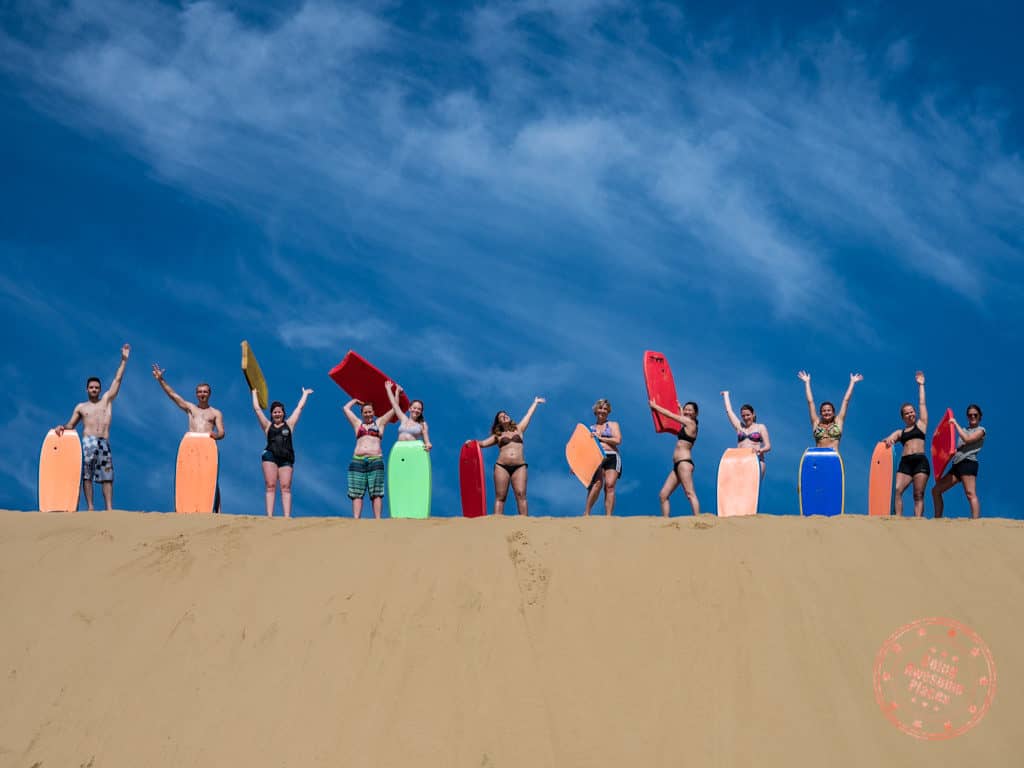
This was the biggest question I got from friends and fans. It’s true that we don’t often do group tours but hear me out because Flying Kiwi makes a lot of sense even for us as a couple.
Don’t have a lot of time to plan
This is the obvious one and true in our case. Whether you’re not a fan of complex trip planning or don’t have the time, it’s nice to have someone else do it all for you. You sign up and off you go!
Since New Zealand is also quite spread out, it’s also not the most straight forward when it comes to planning either. You’re constantly on the move and that means lots of driving, stops to decide on, figuring out what is a must-do, lots of accommodations to book, and food places to research.
Stress of driving taken away

While I do love my road trips like the one we did in Ireland, there’s a ton of driving to do in New Zealand. It was really nice not to have to worry about that everyday.
That camping lifestyle

Whether you’re travelling alone or as a group, camping, campervans, RV-ing is often not a feasible option for a lot of reasons. 1) campervans and RVs can get very expensive and 2) travelling to New Zealand with camping gear is inconvenient or you might not have everything you need so that means you end up having to rent equipment.
Let’s just say I wouldn’t have thought camping to be possible if I did my own trip. Flying Kiwi makes all of that happen because it’s their bread and butter.
Travel with like-minded travellers

Perhaps the best part about being on a Flying Kiwi tour is just how much of a travel family you become with everyone on the bus. With the amount of time you spend with your travelling mates, doing activities together, chatting on the bus, at camp, and cook groups, you truly develop genuine bonds with everyone.
The other part that surprised me is just how diverse the travellers are. In our group, we had the full spectrum from those just graduating high school to retirees. The amazing thing is that we all got along and we enjoyed getting to know everyone and their story.
Excellent value

Let’s look at this breakdown. If we were to do this trip on our own, we’d be looking at something like this over 14 days for one person:
- Accommodations (hostels) – NZ$80 per night
- Food (average restaurants) – NZ$35 per person per day – you’d be surprised how quickly this expense grows as meals in New Zealand are not cheap
- Car rental – NZ$20 per day
- Gas – NZ$25 per day – gas is insanely expensive
- TOTAL – NZ$2240
Compare this to the cost of the Reverse Traverse which is NZ$2545.
You’d think the “mark up” would be much more significant but it’s not. Sure you could argue on both sides of the coin but when you factor in that you have a crew that takes care of you all the way through, logistics are completely out of your hands, and bonuses like the ferry and wine tasting are included, you’re looking at equal, if not better value.
How did we like Flying Kiwi?

Our trip to New Zealand was truly a dream come true. Coming back to the country for a second time, I vowed to see it more thoroughly and go deeper than the surface. While adventure activities was a given with Flying Kiwi, there were many other aspects to the trip that we really liked.
It was the perfect balance for us. Not having an unlimited amount of time while wanting flexibility, this was everything we were looking for.
- Fast but also slow – We covered a lot of ground every day which is what allows you to see so many highlights along the tour but at the same time you stop at way more places than I would’ve planned in my own trip.
- Rigid but also flexible – There’s a plan of attack everyday but when it comes to what you do at the pitstops, what you want to see after making camp, whether you want to bike or not, or what adventure excursion you want to pick is all up to you.
- Soft to hard – Labelled as an adventure bus tour doesn’t mean everything they offer is crazy adrenaline. Yes, activities like skydiving and multi-day kayaking trips are available but if you just want to go for a stroll by the beach or explore on your own, you can do that too
One thing we unexpectedly loved more than we thought we would, was the camping life. We thought we’d miss having a proper bed but the provided sleeping mats were so surprisingly comfortable and the tents ultra spacious. Sure putting it up and taking them down was a bit tedious but we got a good hang of it after a couple of days. On top of this, we were blown away by how clean and complete the facilities were at each holiday park we camped at. There were always hot showers, large bathrooms, and kitchens available.

You’d also think that the communal group cooking would be lame but the truth is, it was a great way to get to know others in your group. I was also continuously amazed at how the bus carried everything we needed to make the amazing meals we had each and every day.
Speaking of food, I think one of the undervalued things when you travel is being able to have nutritious and balanced meals. I’m probably coming off as an uncool Dad right now but anyone that’s travelled a lot knows that it’s hard to always get your veggies in to make sure you “stay regular”. It’s the bad eating that will also often lead to sore throats and colds so I really appreciated the meals we had each day. After all, there’s only so much fish & chip and meat pie meals you can eat.
Lastly, as corny as it sounds, being able to travel with all these people from all walks of life was truly special. It’s probably not what you expect to hear when you travel with your significant other but I quite enjoyed mixing things up by being able to chat with other people and making new friends. We’ve all remained friends post-trip and even have our own private Facebook group.
What sets Flying Kiwi aside from the competition?

I think it’s no secret that there are a bunch of other companies out there that are probably on your radar as you’re trying to plan your trip to New Zealand. I can’t speak for them specifically because we didn’t travel with them but we did meet travellers at our activities from Kiwi Experience and Haka Tours.
What makes Flying Kiwi unique:
- Camping – Every other tour out there focuses on hostel accommodations. Cut out those crummy and possibly ghetto 4-6 bed dorms and trade that in for a good night’s sleep every night in your tent (maximum of 2) and under the stars. I’m telling you, camping is the way to go in New Zealand especially when the facilities are so good.
- Majority of meals included – Whether you’re looking at Haka Tours, Kiwi Experience, G Adventures, or Contiki, you’ll notice that barely any lunches and dinners are included. This means that there is a significant hidden cost with other companies that doesn’t apply for Flying Kiwi.
- Affordable – When you compare against companies like G Adventures, Flying Kiwi is significantly cheaper especially when you start comparing pound for pound what each offers in terms of highlights you see.
- Off the beaten path itinerary – I’ve noticed that with Haka Tours, the only way you can go to the Abel Tasman and that whole stretch of the north west of the South Island is if you do the full 20+ days or if you only focus on the south island. The Reverse Traverse is a very off-the-beaten-path selection that I can’t find replicated anywhere else.
- Thorough – I’m going to take the above even further. Flying Kiwi’s Reverse Traverse is the ONLY itinerary that is less than 15 days and covers the highlights of Queenstown, Abel Tasman, Waitomo, and Bay of Islands all in one.
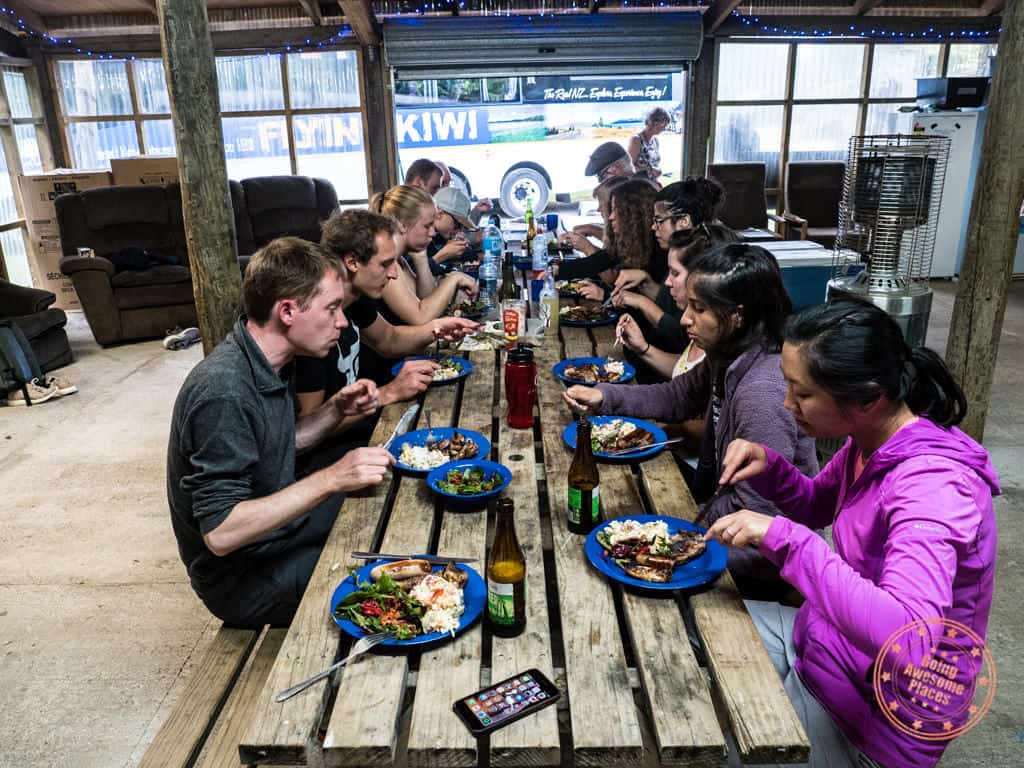
Here’s what Flying Kiwi is not:
- Not a party bus – If that’s what you’re looking for, it’s the what Kiwi Experience is best known for.
- Not hop on and hop off – In theory it’s something you could do with Flying Kiwi but the whole idea is to stick with your crew throughout your trip. Again, this is Kiwi Experience’s bread and butter so if you want ultimate flexibility, consider them but the feeling I got from talking to others is that it’s hard to get to know others and even more so if you’re not into partying.
- Not fully inclusive of all activities – Now you might think this is a bad thing but this speaks to how flexible things really are. Unlike other companies, they don’t include let’s say the jet boat tours if you’re not interested. You get to choose what you want to do which also helps to keep the costs lower.
- Not a get pampered type of trip – This is a kind of trip where everyone gets involved – helping cleaning up, cooking, and load things onto the bus. I thought this was actually a great thing because that’s how we got to know everyone else much faster.
Where Flying Kiwi could be improved:
As a blogger, contrary to popular belief, it’s not all about positive reviews all the time. Here are a few things that I thought where there was room for improvement.
- More photo stops – While we did make a few photos stops while on the road, you definitely don’t have as much flexibility to make stops at will mainly because the bus needs to make it our activities or the campsite
- Icebreakers – I thought one thing that was a bit challenging was joining the group midway through another tour. As a newcomer, you need to build your own friendships amongst the existing groups. Additional ice breaker activities could’ve alleviated this.
- Activity guidance – I noticed that while the activity board was passed around, the guides never really talked about their thoughts and recommendations. That’s why I was glad I did all of my research ahead of time.
I’ve let Flying Kiwi know about my feedback and as a company that takes all recommendations seriously, they’ve already made changes internally to make sure it’s a better experience for future travellers. I love that they actually read the feedback forms we filled out and pro-actively act on them to improve the product.
Top tips you need to know
If you read any of my travel itineraries, you know that I love getting into the details and providing you guys with the information you need to feel comfortable with spending your hard earned money and being prepared for your upcoming trip.
Tip #1: What should I pack?
If you haven’t yet, make sure you check out our New Zealand packing guide. This is a super comprehensive article about everything I brought for the trip including analysis of things that I missed and items I packed that ended up being super helpful for Flying Kiwi.
Another key thing to keep in mind is to dress for the weather. Spring and Fall periods are quite unpredictable so always prepare for wet weather which means having as much waterproof gear as possible.
Tip #2: Staying charged

Depending on how many devices you bring with you, it can be easy to stay fully charged or a bit of a struggle. First of all, there are two USB outlets on the bus per 2 seats. This means that during the day, you’ll be able to keep things like your phone topped up. Just make sure you have the charging cables with you.
When you’re at camp, it’s a different story. Most holiday parks and camp sites you stay at will have a lounge and kitchen facilities. There are always electrical outlets here so you can charge in the evening after making camp. What isn’t a guarantee is whether these facilities are exclusive for Flying Kiwi or not. When they’re completely open, you more or less need to camp out near the outlet to make sure your devices don’t get stolen.
Your best bet is to make sure you always have a back up power bank so you can charge things via USB in your tent overnight and keep it charged during the day on the bus.
Tip #3: Keeping your bags organized on the bus
One of the biggest learning curves of being on a bus is that you need to have a strategy for where you keep your things.
Back of the bus – This is where you keep your suitcase and/or your backpack. You’re not going to be able to access this from the bus and in between stops it’s expected you won’t need things in there either.
On the bus – These are your comfort items for the bus that you want to quick access to but there are a few places where this can be. There’s your day pack which you’ll put in the overhead, loose items in the overhead, space under the seat in front, and on your seat. You likely won’t want to take away from your leg room which leaves the limited space on your seat (on your lap or wedged somewhere on the side) or in the overhead. Getting to the overhead isn’t always convenient when the bus is moving or if you have the window seat.
The key I learned was to have a reusable shopping bag or large stuff sack designated as the “bus bag”. We’d throw in things in here like my chargers, power bank, snacks, camera gear, and accessories such as gloves.

What I’d then do is clip this bag with a carabiner to the handle on the seat in front of me for quick access. This also doubles as a handy hook for in the tent as well.
In your tent – You’ll be moving your suitcase/backpack into your tent most likely along with your day pack but what I found very helpful was to have that same reusable shopping bag to quickly get organized on the bus (i.e. throw everything in) to transfer everything into your tent.
When you’re getting ready to break down camp, I always made sure I had what I needed in my “bus bag” while in the tent. So for instance, if I knew I needed my GoPro accessories during the day, I’d make sure I pull those things out of the suitcase and into the bag.
Tip #4: Getting online
I’ll get the first thing out of the way, there’s no free wifi on the bus.
Most travellers rely on free wifi that show up along the way in the towns that we visited through let’s say McDonalds, cafe, visitor centres, or other random access point.
At camp, a surprising number of holiday parks and campsites have their own wifi. Some of them are paid where you have to buy a voucher code from reception, others provided a limited amount of data for free (i.e. 200MB or 500MB) before becoming paid, and there were others which were completely free with the password provided by your guide.

Cellular data is also inconsistent. The South Island has especially large blackout zones where there is no service at all outside of the big towns. So for those that pay for data on their phone, it’s usually a scramble to check e-mails, post on social media, send out messages, and check the news while it’s available because it can cut out at any moment while on the move.
I recommend picking up something like SkyRoam which I used on our trip. This is essentially a wifi hotspot that uses cellular data. What’s nice about this is that multiple people can connect to it when data is available. This was super handy in places that didn’t have free wifi but had signal. Check out my review of Skyroam.
Tip #5: Keeping valuables secure
Security isn’t really a big issue in New Zealand in general but of course you have to play it smart.
The one thing that isn’t advertised is that every bus has its own safe. This is meant to store things like passports when you need that extra layer of security.
When camping at locations for multiple nights, you have to be careful what you keep inside your tent because anyone can easily come into the campsites. In this situation, you can move your bags back onto the bus (either front or back) but if you don’t have any valuables, a hack we learned on our trip was to use one of those TSA locks on the main tent zipper as a deterrent.
Tip #6: How much cash should you bring?

You have to remember that all the activities you choose to do, accommodation upgrades, and hostels in the city are all added costs. Luckily, almost all places accept credit card which means you don’t necessarily need to bring too much cash.
Here are the exceptions:
- Sand boarding is NZ$22 and is cash only
- Laundry machines take coin only and cost in and around NZ$8
- For some accommodation upgrades, it’s more convenient to pay by cash
So the truth is you really don’t need to bring too much cash. For our trip, we exchanged NZ$2,000 but only because we wanted to reduce the credit card exchange fees.
Tip #7: Do a little planning ahead of time
As much as your day is well-laid out in front of you, there are still some things you want to think about every day to make sure you’re prepared and never caught off guard.

Being prepared for the day
- Camera gear – Do you need a GoPro? What mounts do you need? How many extra batteries or memory cards?
- Extra clothing – Depending on the activity for the day, do you need extra layers? Swim trunks?
Picking your activities

On the bus, a clip board will get passed around with information on the upcoming days’ activities and a sign up sheet. On some days you need to put your name down and in cases like the Abel Tasman, you’ll have a few days to think about it. It helps to know ahead of time the things you want to do so you’re not in a rush to decide.
As part of your welcome e-mail, you’ll also be notified a few of the activities that are recommended to pre-book to make sure you lock in your spot since you’re competing against the public that could potentially book out the time slot that you need.
I recommend that you look up everything ahead of time so you have a pretty good idea of what you’re going to be doing. Also don’t be afraid to ask whether you can do multiple activities in a day.
Thinking outside the box
Something else to consider is that if you find another activity that you want to do that isn’t on the Flying Kiwi list, ask your guide and find out if it’s possible. For instance, someone in our group really wanted to go horseback riding and she was able to do it in Paihia in the Bay of Islands even though it wasn’t a standard offering.
Tip #8: Multiple trips are combined
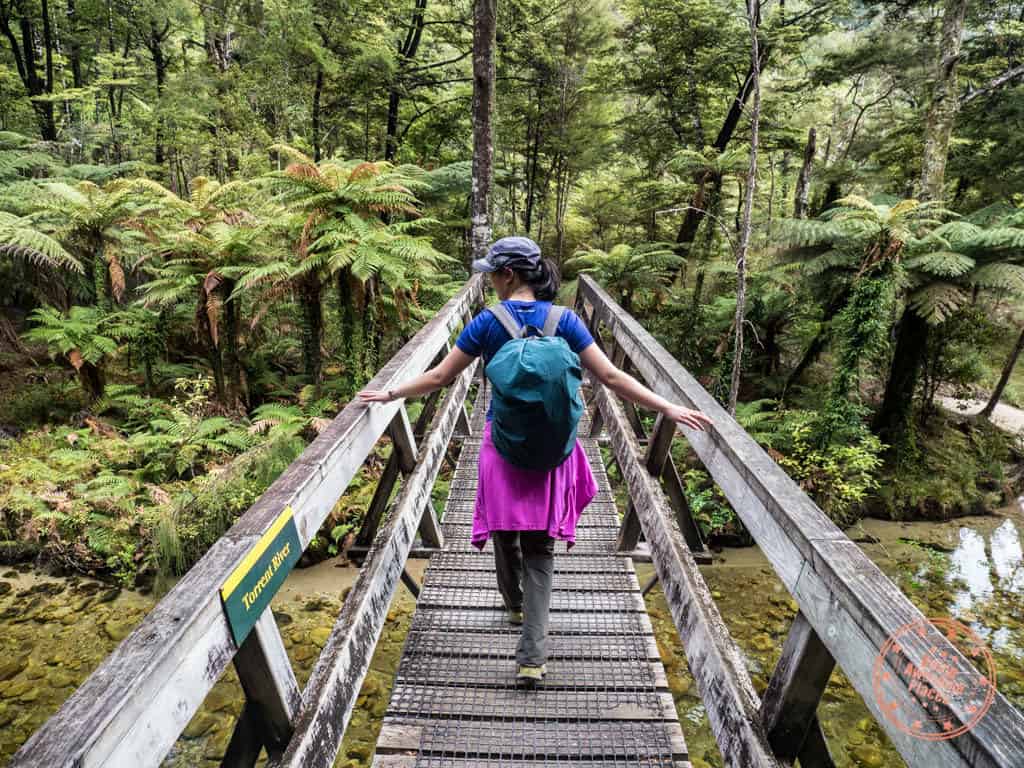
This is more of a good-to-know. Any tour you join with Flying Kiwi will be part of the Ultimate Explorer itinerary. Expect to have travel companions on your tour that may have previously been travelling together with Flying Kiwi prior to your Day 1 and travel companions may be continuing onwards with another tour after your trip concludes.
For example, we were part of the Reverse Traverse tour and this is essentially the back half of the Ultimate Explorer. We essentially joined halfway through that group. For us, some people ended their tour in Nelson, Picton, Wellington, and Auckland. When we started our way up to the Bay of Islands, this was the start of a new Ultimate Explorer group.
Tip #9: City time is short
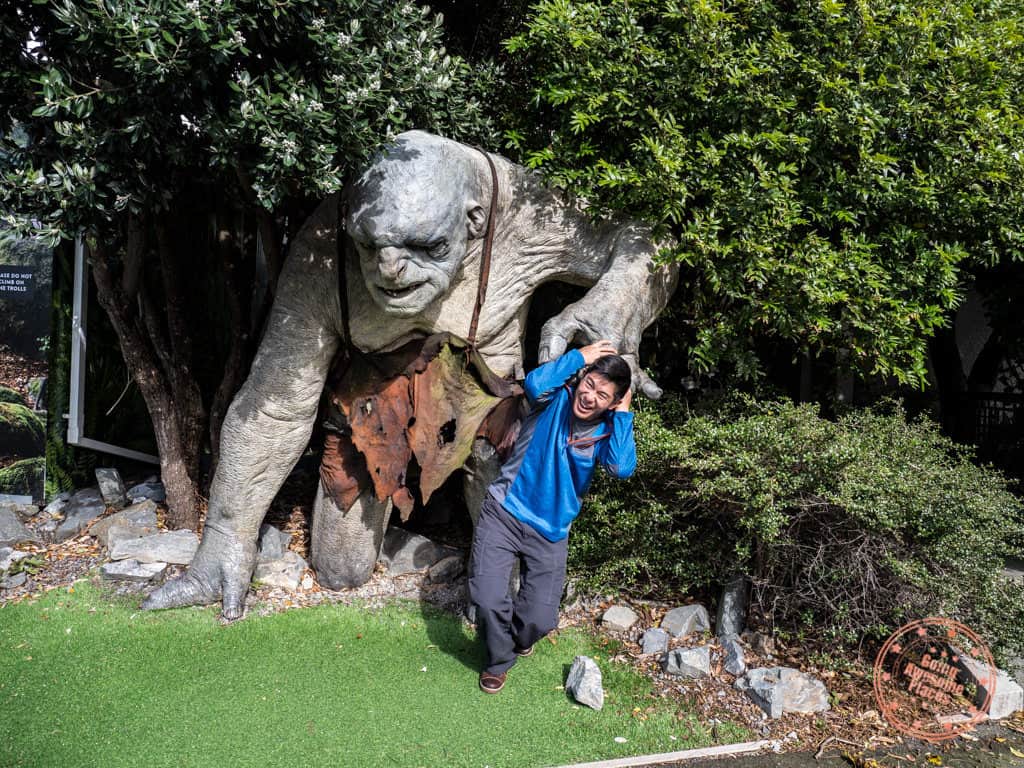
In the bigger cities like Auckland and Wellington, there really isn’t much time to explore but if you plan things right, you can definitely squeeze a few things in. In some instances you’ll have to wake up really early or you’ll have to rely on grabbing a taxi/Uber.
Places that are worth considering:
- WETA Cave in Wellington
- Museum of New Zealand in Wellington
- Skytower in Auckland
- Auckland War Memorial Museum
Tip #10: Sandflies

They’re out in full force in the South Island so make sure to pack bug repellant or pick some up once you land. There are many natural products in New Zealand that are effective. Even better is to just stay covered especially around camp.
Sandflies are a little different from mosquitos in that they don’t leave a welt or itchy spot right away. They also land and latch onto your skin longer than a mosquito does.
Depending on the person, the welt comes in a few days later. That’s when it starts to itch and usually hardens from my experience as well. For me, my bite marks from New Zealand are still visible as they’ve stayed as dark spots.
Tip #11: Useful apps to download
The one app that is recommended by the Flying Kiwi team and other travel companions is maps.me (iOS/Android). It’s an offline map app which can be handy especially since wifi and data are sparse.
Tip #12: Stocking up on supplies

There are a ton of opportunities to pick up snacks and other supplies (think meds or toiletries) along the way. Flying Kiwi will often stop at a grocery store (New World or Countdown) since your guides will need to buy supplies for the meals. This is your chance to stock up.
In regards to alcohol, these grocery stores all carry a wide variety of local and international beverages. The bus will typically have a cooler just for drinks so you can put your purchases in there afterwards. One thing to keep in mind of is that Kiwis are quite diligent in doing ID checks and as a foreigner, the only acceptable form of ID is a passport.
Tip #13: Drones in New Zealand
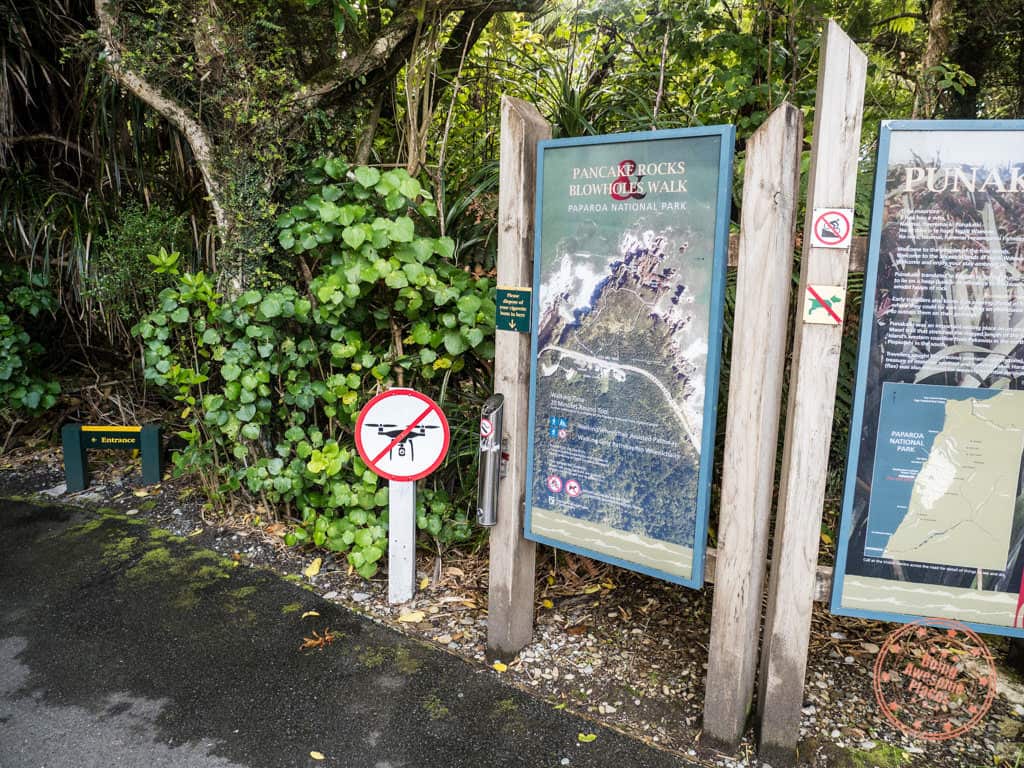
If you’re planning on packing a drone for your trip, note that you have to be careful when it comes to National Parks and areas that are explicitly marked as no-drone-zones. Other areas to be careful with are ones where helicopters and planes are involved but that’s a given. That means you won’t be able to get any drone footage in Milford Sound and the glaciers. A good example of a National Park that doesn’t allow drones is the Abel Tasman.
When I did fly the drone, I did not obtain specific licenses for New Zealand.
Tip #14: Are accommodation upgrades worth it?

I’ll say that I was surprised how comfortable camping was especially when the weather was good. The sleeping mats are extra plush and the sleeping bags more than warm enough.
There are a couple of situations where it makes sense to upgrade:
- You want some alone time with your significant other – Travelling as a couple, it was nice to have a couple of nights outside the tent. Private upgrades are available almost every night. You just need to talk to your guide ahead of time. The prices will vary but they’re most certainly affordable and comfortable. We especially loved our cabin upgrade at the Fox Glacier Top 10 Holiday Park.
- Travelling solo and just want to class it up – Even if you’re on your own, you can easily group up with a couple of other travellers to split the cost for an upgrade. If you do the math, you can get a nice cabin between 3-4 of you for as little as $NZ10 in some instances.
Just remember that cabin upgrades are available most nights but not all and they based on vacancy at the property.
Tip #15: Orders of operations
Everyone travels differently and so this may not apply to everyone but we quickly learned that you had to be smart with your time at camp if you wanted to maximize on sleep and be on time. Here are a handful of tips that we picked up on that we learned from others and developed ourselves.
Mornings
- Wake up, get dressed, and while you’re in the tent, organize all of your bags in the tent
- Have breakfast
- Take the 30 minutes before departure to load your gear onto bus and take down your tent
Evenings
- This is more unpredictable since it really depends on what time you get to your campsite.
- Once you get to the campsite, if a private-ish lounge area is available, start charging right away, get laundry going before others start using it, shower before dinner (may be a bit of a challenge if you’re on cook group).
Tip #16: Stuff, not roll your sleeping bags
You’ll be tempted to do the perfect roll to put those poofy sleeping bags back into the bag but trust me it’s much easier to just stuff it inside. You’ll thank you me later :)
The bottom line is that Flying Kiwi is an excellent way to see New Zealand if you’re the type of traveller like us that enjoys being in the outdoors, travelling with other like-minded companions, want to see a great part of the country, and have an itch for adventure. We enjoyed it very much and I think you will too.
If you have specific questions about the Flying Kiwi experience, feel free to leave a comment below or contact us!
What you should read next

